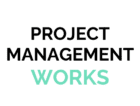As a business owner or employee, performing User Acceptance Testing (UAT) is the final process in a long line of tasks that will result in a successful completion of a project. It is the last stage before a product is finally launched. Before the actual UAT however, the product already underwent testing, checking and review by the programmers, designers and analysts that are involved in the project.
Despite those previous tests, the UAT itself still needs to be done because previous testing stages are not geared towards the needs and standards of the user but towards the programmers and developers of the product, but it’s important that testing geared towards the end user is also completed. Here are 5 reasons why you need user acceptance testing:
Ensure that the product is convenient and easy to use.
Although the product seems fine from the perspective of those who developed it, the user who does not know the concept behind the product might have difficulties using it. This might be because the product is too technical, that it is impossible for someone who is not very technically inclined to understand its usage and features, or the product design itself is inconvenient for the regular user who may have to perform many repetitive tasks.
Check whether or not the product is functioning as expected.
This is of course related to the first item. During UATs, the target user does not just learn about the product and how to use it, but they also try to test all of its functions and see if the product responds as expected. This is common for all sorts of products including, for instance, ecommerce websites and apps where customers need to purchase something through a shopping cart. In such cases someone needs to check if the payment process works, and if the shopping process is easy to do.
Get initial feedback and tweak/improve the product accordingly.
Whatever results are gathered during the UAT can be used to improve the product further and its user-friendliness. The changes could involve the buying process in the e-commerce example, convenience of use, or changes in instructions to improve the product’s functionalities.
Spot any minor and fatal defect and have it fixed early on.
Design and content issues can be tweaked and corrected if necessary, and other bugs can be removed before the product launch. This is much better and less hassle for programmers and designers to fix because if the defects are discovered after launch, employees then have to deal with the urgency of customer demands.
Avoid disappointing target customers.
Launching a product that is defective or confusing to use is a risky thing because there is a possibility of losing a huge portion of your leads. Some of your customers don’t have the time to figure out how your service or product works. So if they find it too complicated, they might just leave and look for something else. Also, if the product has defects, this might only result in lots of customer complaints, and it is not going to give a good impression among your target market.
User Acceptance Testing might be an added step in an already long process, but abandoning it might cause you to lose customers upon launch. So if you want to make sure that your product launches on the right note, make sure you get a UAT done first.




